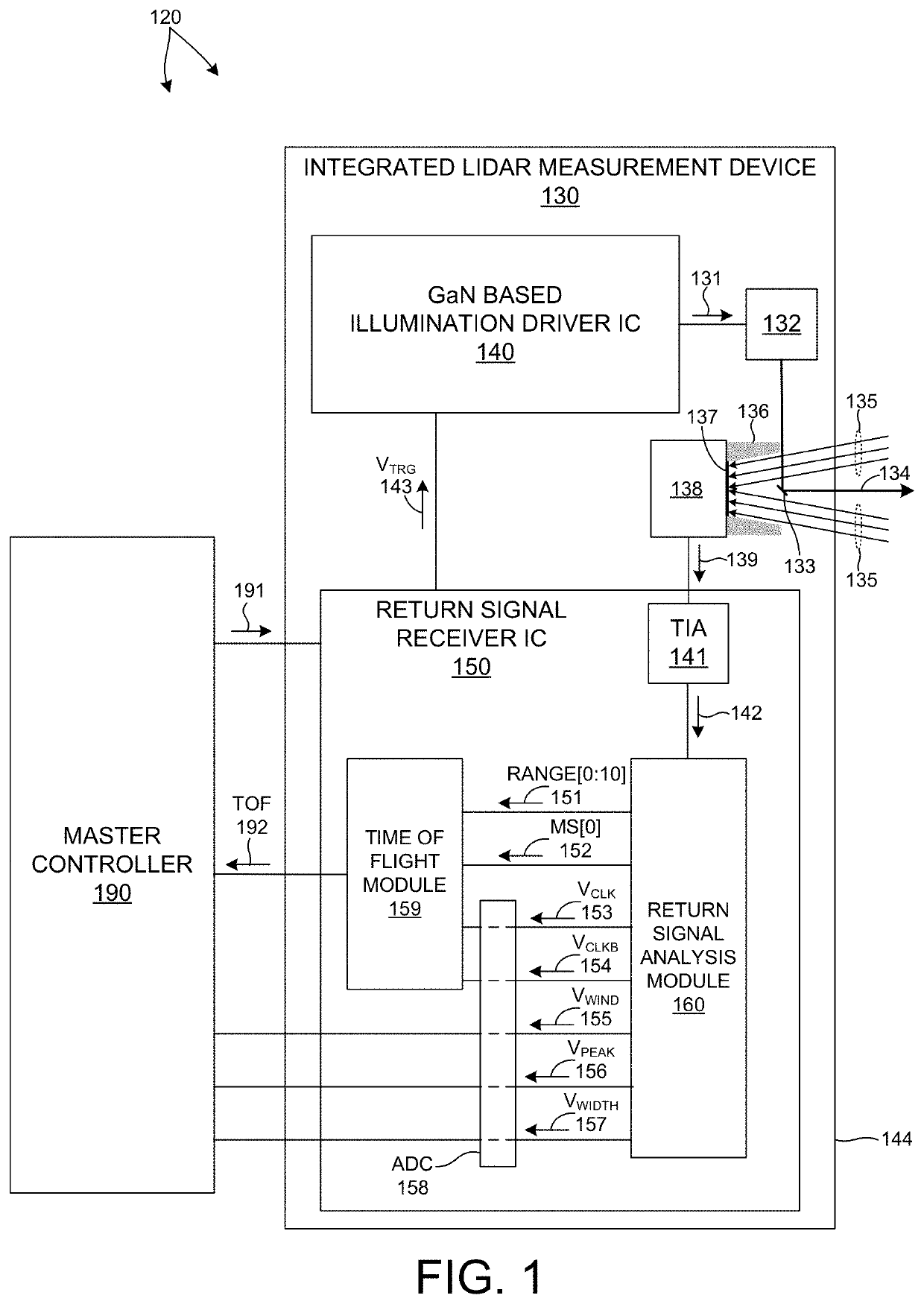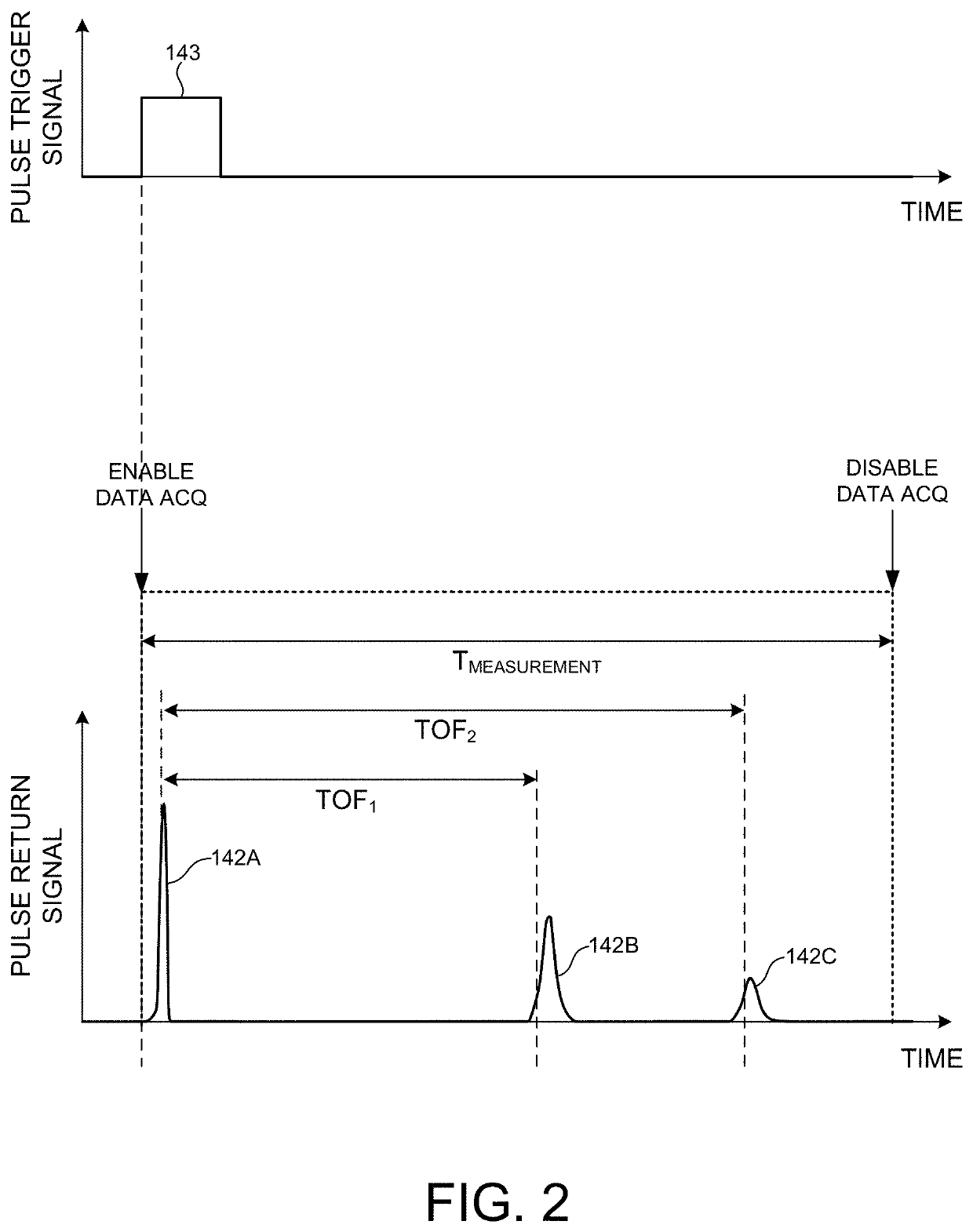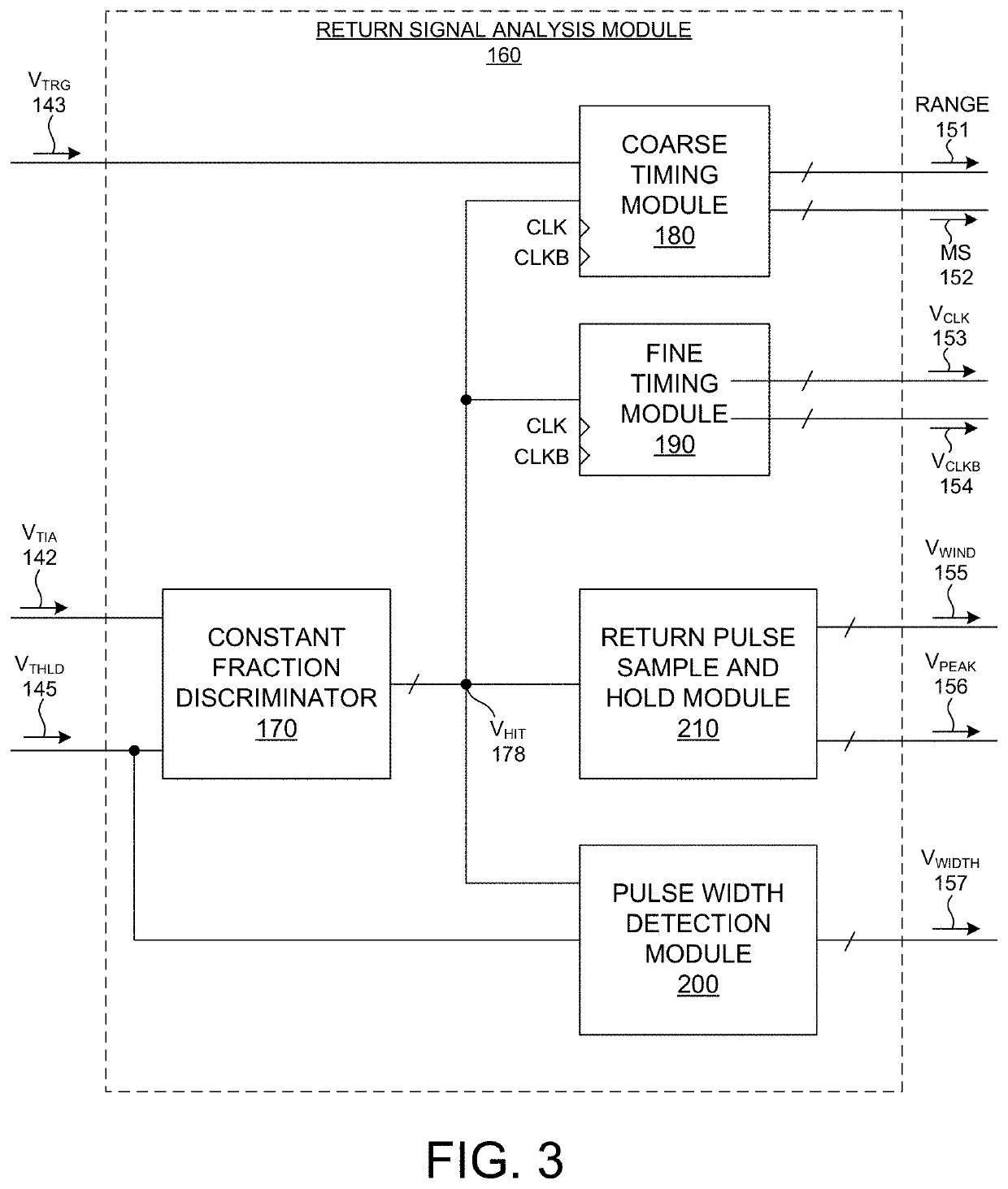LIDAR data acquisition and control
a 3d point cloud and data acquisition technology, applied in the field of 3d point cloud measuring systems, can solve the problems of reducing the density of point clouds, affecting the accuracy of measurement results, so as to achieve systematic delays
- Summary
- Abstract
- Description
- Claims
- Application Information
AI Technical Summary
Benefits of technology
Problems solved by technology
Method used
Image
Examples
Embodiment Construction
[0035]Reference will now be made in detail to background examples and some embodiments of the invention, examples of which are illustrated in the accompanying drawings.
[0036]FIG. 1 depicts a LIDAR measurement system 120 in one embodiment. LIDAR measurement system 120 includes a master controller 190 and one or more integrated LIDAR measurement devices 130. An integrated LIDAR measurement device 130 includes a return signal receiver integrated circuit (IC) 150, a Gallium Nitride based illumination driver integrated circuit (IC) 140, an illumination source 132, a photodetector 138, and a trans-impedance amplifier (TIA) 141. Each of these elements is mounted to a common substrate 144 (e.g., printed circuit board) that provides mechanical support and electrical connectivity among the elements.
[0037]In addition, in some embodiments, an integrated LIDAR measurement device includes one or more electrical power supplies that provide electrical power to the electronic elements mounted to sub...
PUM
 Login to View More
Login to View More Abstract
Description
Claims
Application Information
 Login to View More
Login to View More - R&D
- Intellectual Property
- Life Sciences
- Materials
- Tech Scout
- Unparalleled Data Quality
- Higher Quality Content
- 60% Fewer Hallucinations
Browse by: Latest US Patents, China's latest patents, Technical Efficacy Thesaurus, Application Domain, Technology Topic, Popular Technical Reports.
© 2025 PatSnap. All rights reserved.Legal|Privacy policy|Modern Slavery Act Transparency Statement|Sitemap|About US| Contact US: help@patsnap.com



